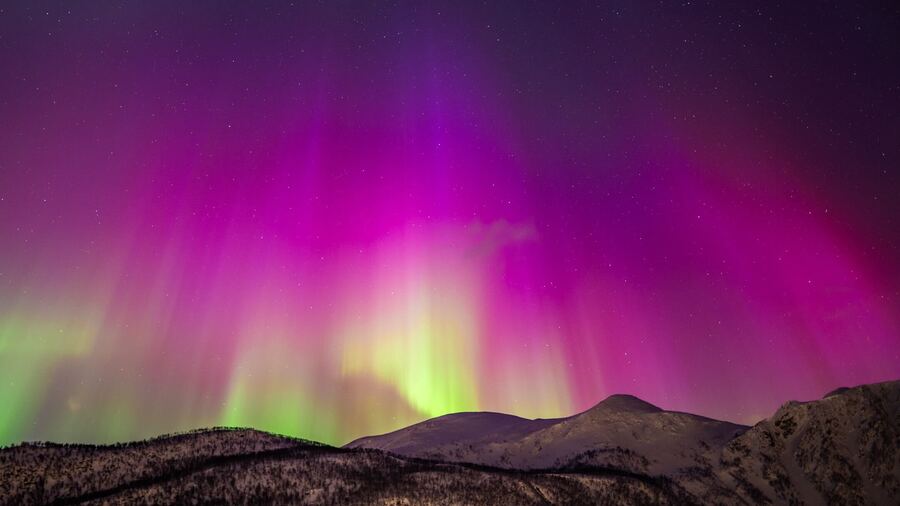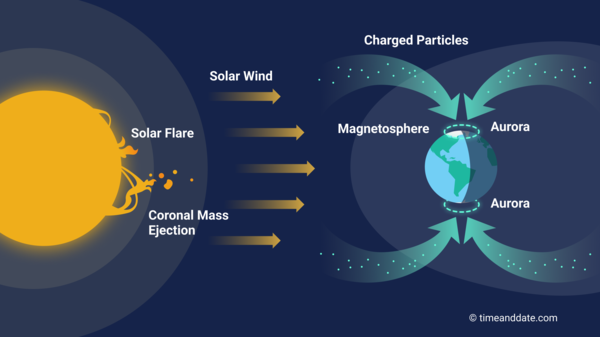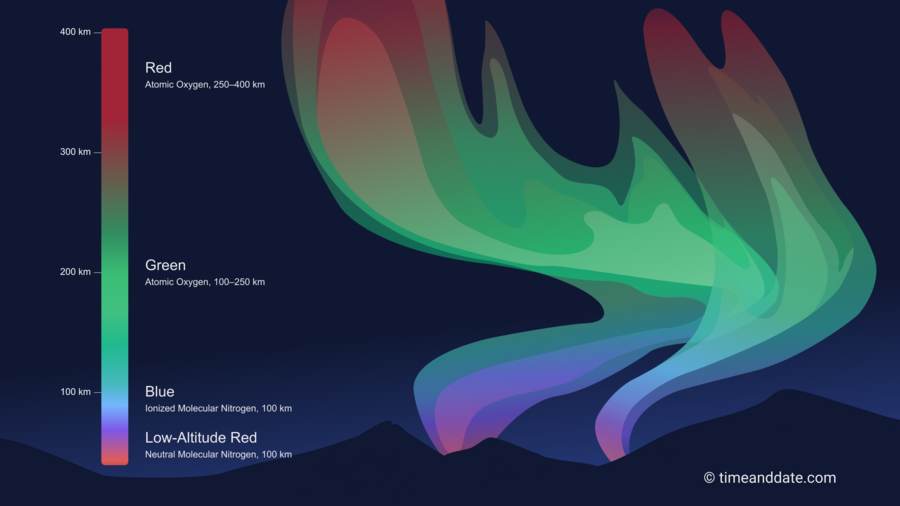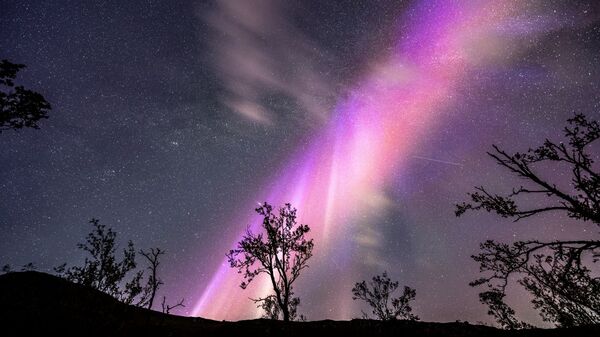
While green is the most common color in the northern and southern lights , other colors are more likely to appear during times of high solar activity. In 2025, we are in one of these active periods.
With increased solar activity, there will be more auroras, and they will be even more spectacular and visible farther from the poles, giving more people the chance to witness their breathtaking beauty.
Solar Maximum & Colorful Collisions
In 2025, the Sun is in its solar maximum phase , the peak of activity in its 11-year cycle, making it a very exciting year for those hoping to witness the aurora borealis, better known as the northern lights, and the aurora australis, the southern lights.
During solar maximum, the Sun becomes more active. It sends out streams of charged particles and plasma through phenomena such as solar flares and coronal mass ejections.
These particles can reach Earth when the Sun’s activity is directed toward us or when they're carried here as part of the ever-flowing solar wind.

When the solar particles reach Earth , our planet’s invisible shield—the magnetosphere—mostly redirects them.
However, some particles manage to sneak through and travel along Earth’s magnetic field lines toward the north and south poles, colliding with gases in our upper atmosphere. These collisions create the bright and colorful displays of the aurora.
Why Might We See More Colorful Auroras in 2025?
During the solar maximum phase, the Sun’s activity increases, resulting in a greater number of charged particles, as well as more energetic particles, reaching Earth’s atmosphere.
This boosts the chances of solar particles colliding with gases in our atmosphere, producing stunning auroras.
What you might not know is that the color of the aurora depends on how high up the collision occurs, how much energy the particles have, and which gases they interact with.
The Science Behind Aurora Colors
Earth’s atmosphere is made up of different gases, mainly nitrogen and oxygen. The color of an aurora depends on the type of gas involved and how high up the collision occurs.
Aurora displays can occur at heights between approximately 80 and 500 km (50–311 miles) above Earth’s surface. Interestingly, the altitude at which an aurora occurs depends on the energy of the particles from the Sun.
If the particles are very energetic, they can travel further into Earth’s atmosphere, so we can see the aurora at lower altitudes. This also affects the colors that we see in the sky.

Red Auroras
Less common red auroras are caused by charged particles colliding with atomic oxygen. However, these collisions occur at higher altitudes in Earth’s upper atmosphere, generally between 250 and 400 km (155–249 miles).
At these altitudes, the atmosphere is much less dense, which means fewer collisions for the oxygen atoms, thus allowing more time for the oxygen to release red light. This process takes approximately two minutes, which is significantly longer than the process for other aurora colors.
They are typically seen during high solar activity because the conditions needed for red oxygen emissions, which have longer wavelengths, are rare.
Green Auroras
Green auroras are also caused by atomic oxygen and usually occur between 100 and 250 km (62–155 miles).
They are the most common type of aurora because a large amount of charged particles collide at an altitude where the atmosphere is still sparse enough to give the oxygen atoms time to release green light, which takes about 0.7 seconds.
The reason why we don’t see green auroras below 100 km (62 miles) is that the atmosphere is too dense, and the oxygen atoms collide with other elements before they can release light.
Blue Auroras
Ionized nitrogen molecules produce the rare blue light that we see in auroras. These blue auroras tend to occur at lower altitudes, usually below 100 km (62 miles).
Blue auroras require higher-energy particles from the Sun to make their way further down into the Earth’s atmosphere, where interactions with nitrogen are more likely.
Low-Altitude Red Auroras
An intense red glow can sometimes be seen along the lower edges of auroras.
Unlike the red auroras that we see at a higher altitude, this low-altitude red is produced by neutral nitrogen molecules. These auroras tend to occur below 100 km (62 miles) and are associated with intense solar activity.
Combination Colors
- Yellow auroras: Although uncommon, yellow auroras can appear due to a blend of green and red light emissions at a variety of different altitudes.
- Pink/Purple auroras: A mixture of the gases that give off red and blue light can create auroras with pink or purple tones. They are usually observed at altitudes of approximately 100 km (62 miles) and generally only occur during periods of high solar activity.

The Unpredictability of the Aurora
It’s important to note that these are the typical altitudes for auroras, but they are famously unpredictable!
Sometimes the ionized nitrogen molecules can travel up, and when sunlight hits them, they can create a blue color which can appear pink or purple if mixed with red emissions. This phenomenon is referred to as sunlit auroras.
There have been some cases of blue auroras observed at heights of around 1000 km (621 miles), as well as red auroras at approximately 600 km (373 miles).
This is likely the reason why many official sources on the aurora differ slightly when it comes to the altitudes where the different colors of the aurora are produced.


